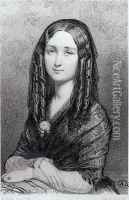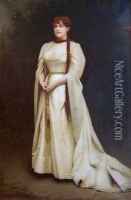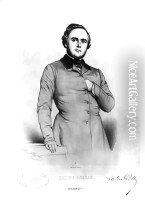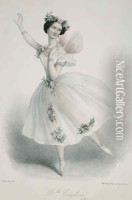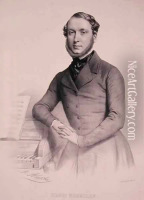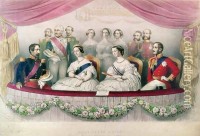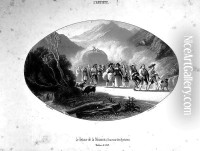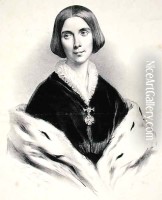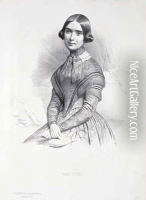Marie Alexandre Alophe Paintings
Marie Alexandre Alophe, often known simply as Alophe, was a French artist born in 1812. He was primarily known as a lithographer and painter, contributing to the rich tapestry of 19th-century French art. Over the course of his career, he produced a variety of works, including illustrations, portraits, and genre scenes, showcasing his versatility and skill as an artist.
Alophe's early life and training are not extensively documented, but it's known that he began his career in the realm of lithography, a printmaking technique that was becoming increasingly popular in France at the time. He developed a reputation for his lithographic work, which allowed for the mass production of images and was a valuable skill in an era that preceded modern photographic processes.
During the 1830s, Alophe became particularly known for his participation in the production of 'Modes et Manières du Jour,' which were prints depicting the latest fashion trends. His work in this area was influential in the spread of Parisian styles and helped establish him as a respected figure in the world of fashion illustration.
In the 1840s, Alophe shifted his focus more towards painting, although he continued to work as a lithographer. He exhibited at the prestigious Paris Salon, the official art exhibition of the Académie des Beaux-Arts in Paris. His paintings typically featured delicate brushwork and a keen attention to the interplay of light and shadow, reflecting the influence of the Romantic movement, which emphasized emotion and individualism.
Despite a successful career as an artist, Alophe's work is less well-known today than that of some of his contemporaries, and many details of his life remain obscure. Nonetheless, he contributed to the cultural life of France during a period of significant change and helped to shape the visual culture of his time through his lithographs and paintings.
Marie Alexandre Alophe died in 1883, leaving behind a body of work that captures the spirit and aesthetics of mid-19th century France. While he may not be as widely recognized as some of his peers, his contributions to lithography and painting continue to be appreciated by art historians and collectors who specialize in this period.
